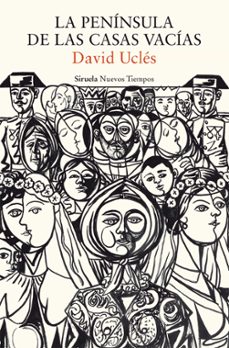Imprescindibles
Más vendidos Libros más leídos eBooks más leídos Todos los libros Todos los libros Autores destacados Series y sagas
Recomendados Libros recomendados Autores destacados Libros que inspiran Vidas con historia LGTBIQ+ English books
Ficción
Literatura Contemporánea Estudios literarios Clásicos Cuentos Poesía Teatro Libros de bolsillo Sagas literarias
Géneros literarios Novela romántica y erótica Novela negra Novela histórica Narrativa fantástica Novela de ciencia ficción Novela de terror Narrativa de humor Narrativa de viajes
No Ficción
Ciencias y tecnología Biología Ciencias Ciencias naturales Divulgación científica Informática Ingeniería Matemáticas Medicina Salud y dietas Formación Idiomas Estilo de vida Libros de Cocina Guías de viaje Narrativa de viajes Deportes Libros de Juegos Manualidades
Humanidades Autoayuda y espiritualidad Ciencias humanas Derecho Economía y Empresa Psicología y Pedagogía Filosofía Sociología Filología Biblioteconomía Estudios filológicos Estudios lingüísticos Estudios literarios Historia y crítica de la Literatura
Infantil
Juvenil
#Jóvenes lectores Narrativa juvenil Clásicos adaptados Libros Wattpad Libros Booktok Libros de influencers Libros de Youtubers Libros Spicy Juveniles Libros LGTBIQ+ Temas sociales Libros ciencia ficción Libros de acción y aventura Cómic y Manga Juvenil Cómic Juvenil Manga Shonen Manga Shojo Autores destacados Jennifer L. Armentrout Eloy Moreno Nerea Llanes Hannah Nicole Maehrer
Libros de fantasía Cozy Fantasy Dark academia Hadas y Fae Romantasy Royal Fantasy Urban Fantasy Vampiros y hombres lobo Otros Misterio y terror Cozy mistery Policiaca Spooky Terror Thriller y suspense Otros
Libros románticos y de amor Dark Romance Clean Romance Cowboy Romance Mafia y amor Romance dramatico Romance dramatico Romcom Sport Romance Otros Clichés Enemies to Lovers Friends to Lovers Hermanastros Slow Burn Fake Dating Triángulo amoroso
Cómic y Manga
Novela gráfica Novela gráfica americana Novela gráfica europea Novela gráfica de otros países Personajes, series y sagas Series y sagas Star Wars Superhéroes Cómics DC Cómics Marvel Cómics otros superhéroes Cómics Valiant
eBooks
Literatura Contemporánea Narrativa fantástica Novela de ciencia ficción Novela de terror Novela histórica Novela negra Novela romántica y erótica Juvenil Más de 13 años Más de 15 años Infantil eBooks infantiles
Humanidades Autoayuda y espiritualidad Ciencias humanas Economía y Empresa Psicología y Pedagogía Filosofía Historia Historia de España Historia Universal Arte Cine Música Historia del arte
Ciencia y tecnología Ciencias naturales Divulgación científica Medicina Salud y dietas Filología Estudios lingüísticos Estudios literarios Historia y crítica de la Literatura Estilo de vida Cocina Guías de viaje Ocio y deportes
RICHARD HILL
Recibe novedades de RICHARD HILL directamente en tu email
Filtros
Del 1 al 2 de 2
AKAL 9788446001317
La enseñanza de la Fisiología Animal en las Universidades de nuestro país precisa de textos de calidad que sean capaces de aportar una visión amplia de las características fisiológicas de los muy diviersos grupos animales utilizando el enfoque comparado. Pero esto no es suficiente, y que si el alumno va a utlizar un único texto como guía básica de apoyo a la clase magistral se precisa que el tema sea abordado con suficiente profundas como para que las bases fisiológicas del modo de acción de los distintos sistemas orgánicos queden bien establecidas en la mente del futuro biçologo. Este doble objetivo se ha logrado en gran medida en esta seguna edición del texto de Richard W. Hill, pero hay otros valores destacables que hace única a esta Fisiología Comparada. Por una parte se hace incidencia especial en la relación docente entre autor y lector a lo largo de todo el texto. Es decir, los hechos fisiológicos no sólo se exponen, como suele ocurrir en otras monografías, sino que se explican, muchas veces de forma exhaustiva, tratando de hacer razonar al que lee para que no sólo aprenda, sino que también comprenda. Este énfasis se extiende a la comprensión de la física y la química de fenómenos básicos como las leyes de los gases, la ósmosis, la evaporación, la energética animal o la hidrodinámica, sin las cuales no es posible el dominio de los fenómenos fisiológicos superpuestos. Por otra parte, el grado de descripción del sistema fisiológicos en grupos de animales distintos, de forma sistemática en cada capítulo, supera concreces a otros textos comparables. A esto hay que añadir un gran acierto: la antigua edición adolecía de la falta de tratamiento de los sistemas Nervioso y Endocrino, cosa que se ha paliado con la autoría compartida con Gordon A. Wyse, en la presente edición. Traducida por verdaderos expertos, la obra constituye el mejor y màs actualizado manual dedicado al estudio de la materia indicada.
Ver más
Tapa blanda
ROSSI, ERNEST L. y HILL, RICHARD
Crown House Publishing 9781785832918
Richard Hill and Ernest L. Rossis The Practitioners Guide to Mirroring Hands: A Client-Responsive Therapy that Facilitates Natural Problem-Solving and Mind Body Healing describes in detail how Mirroring Hands is conducted, and explores the framework of knowledge and understanding that surrounds and supports its therapeutic process. Foreword by Jeffrey K. Zeig, Ph.D. In this instructive and illuminating manual, Hill and Rossi show you how Mirroring Hands enables clients to unlock their problem-solving and mind body healing capacities to arrive at a resolution in a way that many other therapies might not. The authors offer expert guidance as to its client-responsive applications and differentiate seven variations of the technique in order to give the practitioner confidence and comfort in their ability to work within and around the possibilities presented while in session. Furthermore, Hill and Rossi punctuate their description of how Mirroring Hands is conducted with a range of illustrative casebook examples and stage-by-stage snapshots of the therapy in action: providing scripted language prompts and images of a clients hand movement that demonstrate the processes behind the technique as it takes the client from disruption into the therapeutic; and from there to integration, resolution, and a state of well-being. This book begins by tracing the emergence of the Mirroring Hands approach from its origins in Rossis studies and experiences with Milton H. Erickson and by presenting a transcription of an insightful discussion between Rossi and Hill as they challenge some of the established ways in which we approach psychotherapy, health, and well-being. Building upon this exchange of ideas, the authors define and demystify the nature of complex, non-linear systems and skillfully unpack the three key elements of induction to therapeutic consciousness focused attention, curiosity, and nascent confidence in a section dedicated to preparing the client for therapy. Hill and Rossi supply guidance for the therapist through explanation of therapeutic dialogues non-directive language principles, and through exploration of the four-stage cycle that facilitates the clients capacity to access their natural problem-solving and mind body healing. The advocate Mirroring Hands as not only a therapeutic technique, but also for all practitioners engaged in solution-focused therapy. Through its enquiry into the vital elements of client-cue observation, symptom-scaling, and rapport-building inherent in the therapist/client relationship, this book shares great wisdom and insight that will help the practitioner become more attuned to their clients inner worlds and communication patterns. Hill and Rossi draw on a wealth of up-to-date neuroscientific research and academic theory to help bridge the gap between therapys intended outcomes and its measured neurological effects, and, towards the books close, also open the door to the study of quantum field theory to inspire the readers curiosity in this fascinating topic. An ideal progression for those engaged in mindfulness and meditation, this book is the first book on the subject specially written for all mental health practitioners and is suitable for students of counseling, psychotherapy, psychology, and hypnotherapy, as well as anyone in professional practice.
Ver más
eBook
Del 1 al 2 de 2




























